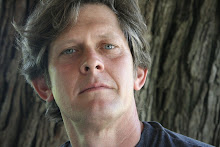 US National Archives
US National ArchivesThe Cajun instrument known as the frotoir is the result of a complex and rich evolutionary process. Basically the frotoir is a rub-board- a corrugated metal device used to wash clothing by hand. The highly recognizable sixteenth notes in Cajun and Zydeco music come from the rapid rubbing of a spoon on the frotoir- the “chanka-chanka.” Legend has it that Clifton Chenier, the pre-eminent Cajun accordion player asked and a certain Mr. Landry, an oil-field machinist, to adapt the traditional rectangular rub-board to a more ergonomic form better-suited to playing Cajun and Zydeco music. This meeting of industrial machine processes and culture led to a beautifully formed single piece of stainless steel with shoulder supports and a contoured playing surface.
In many ways, the BeauSoleil Home reflects this same tradition of a melding of culture and industry. The design of the home relies upon the most advanced technology for energy generation and climate control. But it also relies upon the adaptation of traditional building forms and materials as well as passive cooling strategies. Like the frotoir, the BeauSoleil Home is not extravagant or over-wrought. It is simple and modest. The BeauSoleil home is first and foremost functional. Just as Cajun culture has traditionally done, it makes the most of a little. Social interaction, in the form of entertaining and cooking, are the daily rituals which inspire its form. The home adapts to the unexpected, whether it be an unexpected guest and a subsequent crawfish boil or a hurricane.
Architecturally, the BeauSoleil home is not overly formalistic or rationally ordered. Its small size (800 square feet) require a certain degree of order and efficiency but the home does not forsake its roots. The home has a very generous kitchen and bathroom. These are two areas which modern architects tended to label as “service” spaces. In fact, many of the past Decathlon homes relegate these rooms to thickened “walls,” barely inhabitable spaces. The BeauSoleil Home does not divide its spaces into “served” and “service” spaces as Louis Kahn and other modern architects did. Mechanical spaces do not drive the use of the space. These pieces of equipment are placed in lofts and penthouses where they belong- out of the way of human habitation.
In a competition where the rules tend to dictate the form of all of the homes, the BeauSoleil Home again refuses to ignore Louisiana. A majority of the Decathlon homes do not have porches. The rules tend to discourage these spaces which are considered marginal by the organizers. The BeauSoleil Home refuses to exclude the porch. Our culture requires the porch for day to day life. In fact, the home has two porches- the dogtrot or transitional porch and the kitchen porch. Contrary to the insinuation of the rules, these are not marginal spaces- they are the stages of everyday life.
-W. Geoff Gjertson, AIA
TEAM BeauSoleil Faculty Advisor





No comments:
Post a Comment